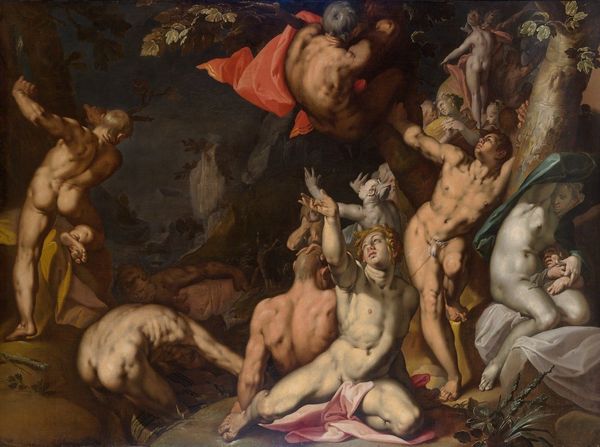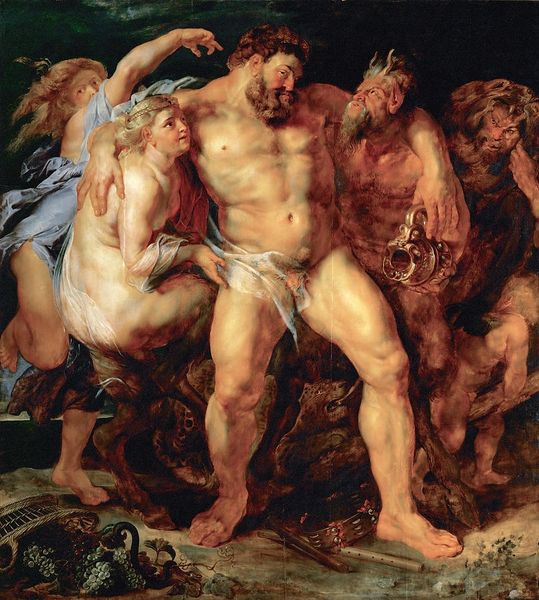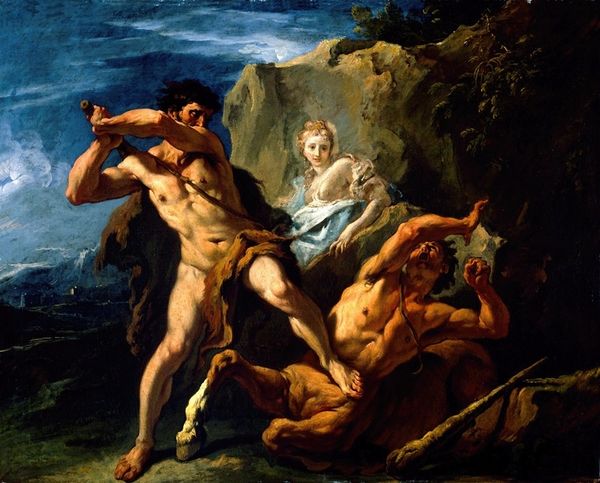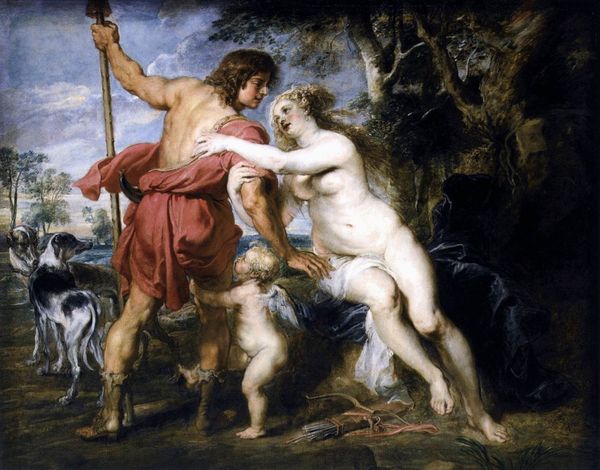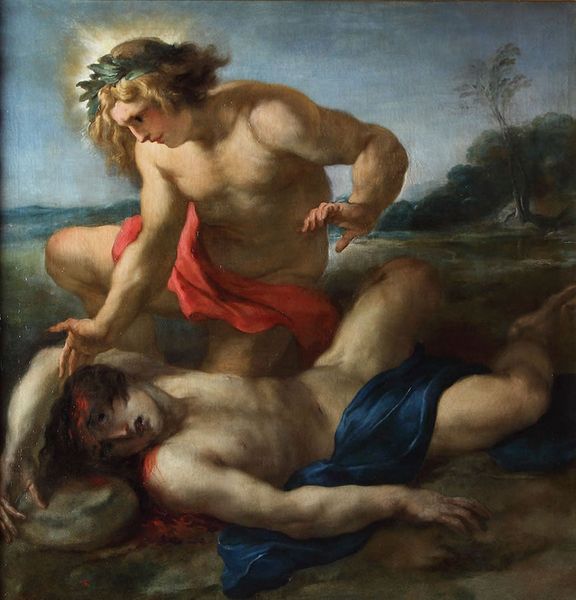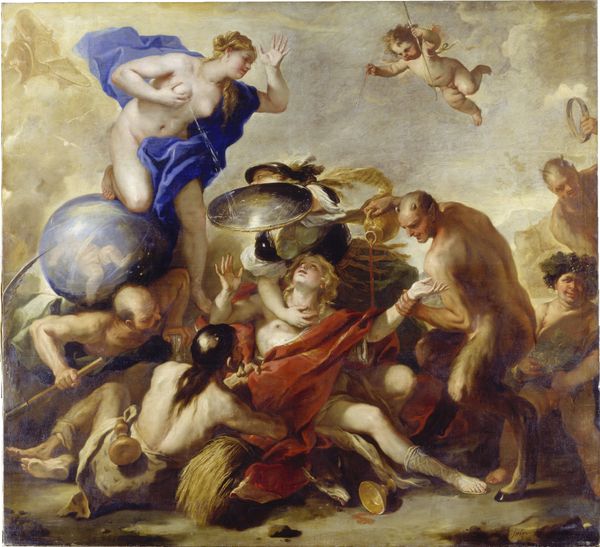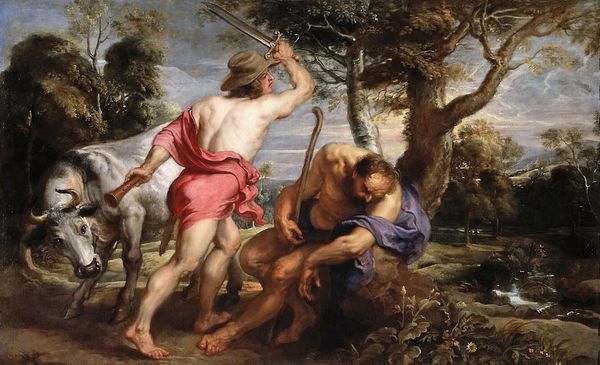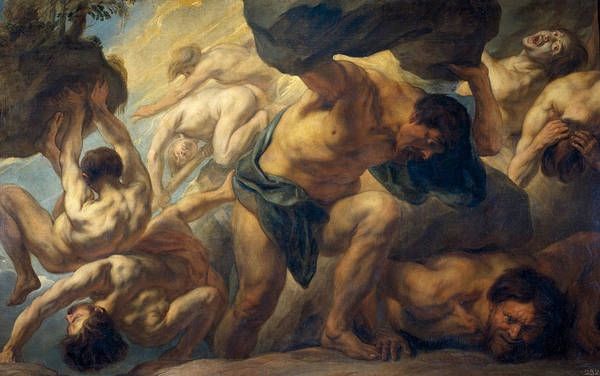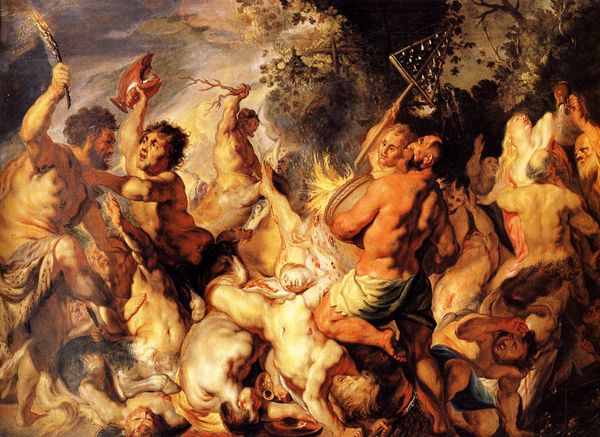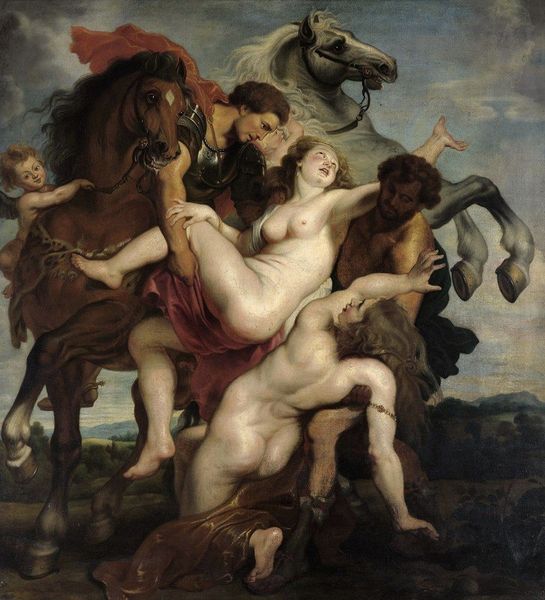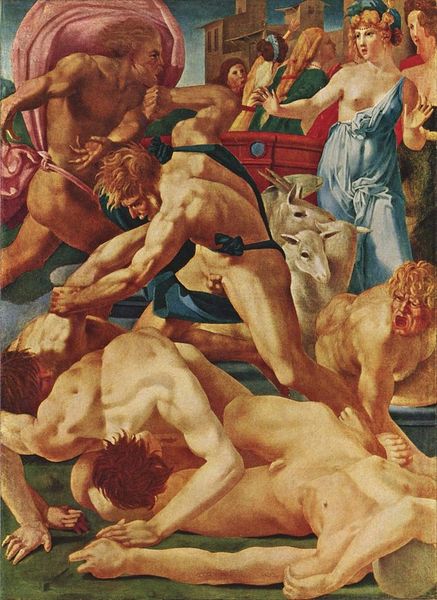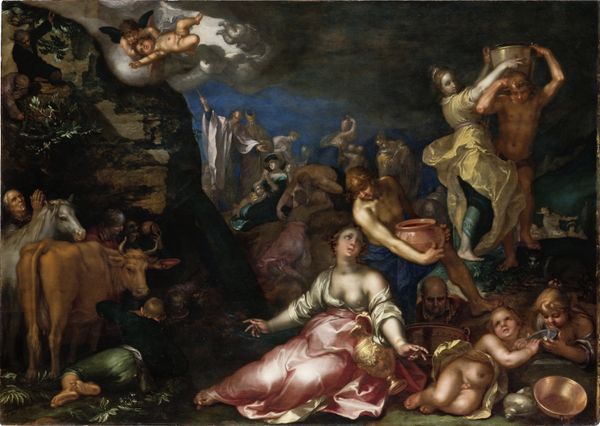
oil-paint
#
narrative-art
#
baroque
#
oil-paint
#
figuration
#
oil painting
#
flemish
#
history-painting
Copyright: Public domain
Peter Paul Reubens painted 'The Rape of Hippodamia' in the early 17th century, using oil on canvas, a common choice at the time. What's most striking about it is the labor involved. Large canvases like this, requiring many layers of paint, were a major undertaking. The cost would have been considerable, with pigment prices varying wildly. Ultramarine blue, for example, was literally worth more than gold, made from Lapis Lazuli mined in Afghanistan. The physical act of grinding these materials, mixing them with oil, and applying them with brushes made from hog bristles or sable hair – it was all intensely manual. Reubens had a workshop of assistants, each specializing in certain tasks, and a highly organized production line, which allowed him to meet the demand for his work. This hints at the developing economic systems in the 17th century, where art started resembling more of an industry. When you look at the painting, think about the many hands that contributed to its making, and the cost that went into the production process. This perspective challenges the traditional view of art as solely the product of individual genius.
Comments
No comments
Be the first to comment and join the conversation on the ultimate creative platform.

